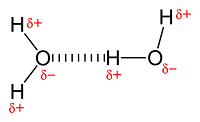- Messages
- 1,394
- Reaction score
- 1,377
- Points
- 173
thanxNo of moles of CO = 96/24 = 4mols
Fe2O3 Mr =160
No of moles of Fe2O3 = 320/160= 2
2 mols Fe2O3 requires 6 moles CO for complete reaction but only 4 moles of CO are present, and is therefore limiting.
So, 3 mols CO = 112 g Fe
4 mols CO =149.3 g Fe (ans)

